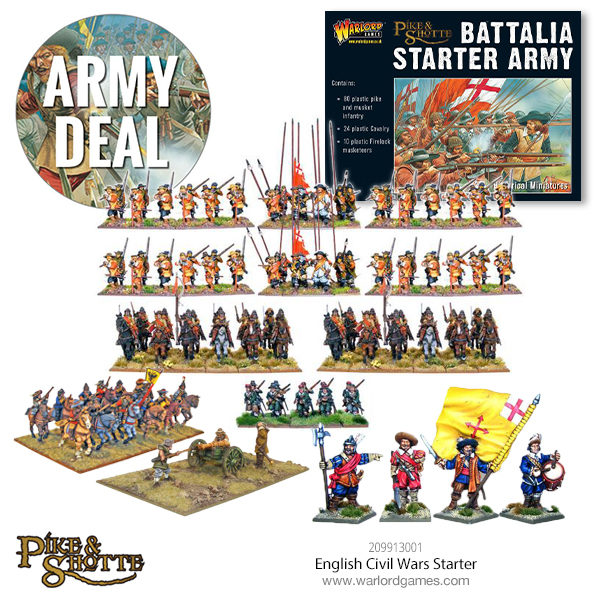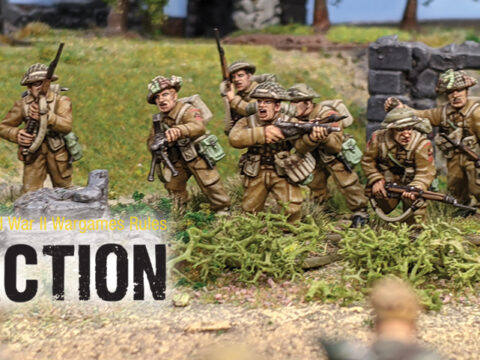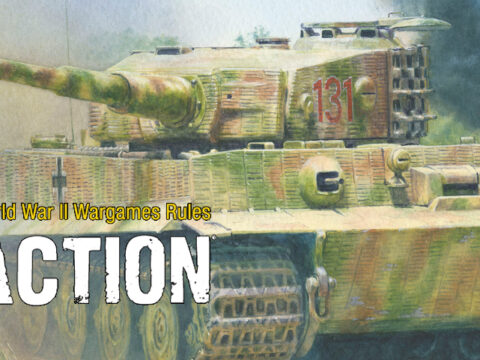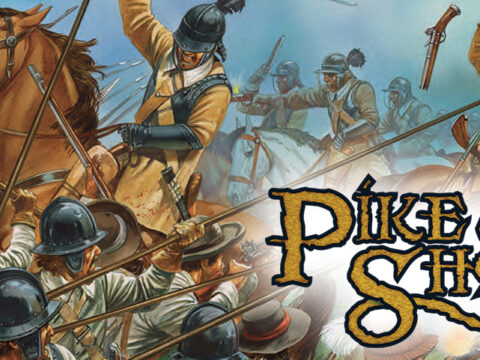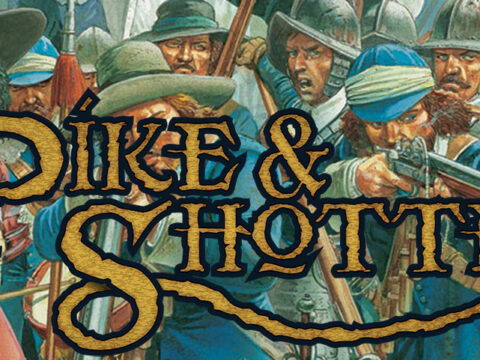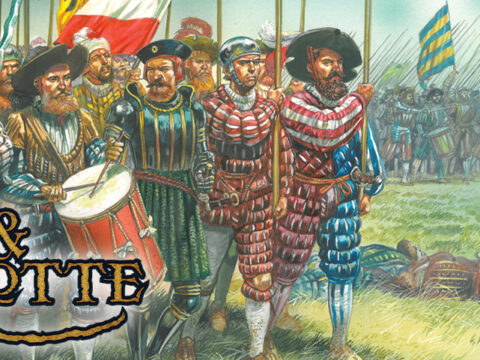To Kill a King – the work and the thoughts behind the new ECW supplement!
By Charles Singleton
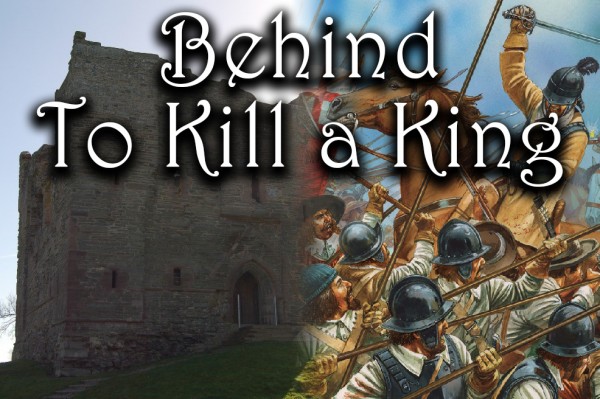
Introduction
I first got to learn about the English Civil Wars was when I was taken to watch a large-scale re-enactment sometime in the mid 1970’s. I’ve been immersed in the subject ever since really, having wargamed, re-enacted, taught the subject and written about it. My day job as a commissioning editor for Helion and Company sees me work with the subject on an almost daily basis. I’ve also recently found out that I have ancestors who fought on both sides during the conflict too!
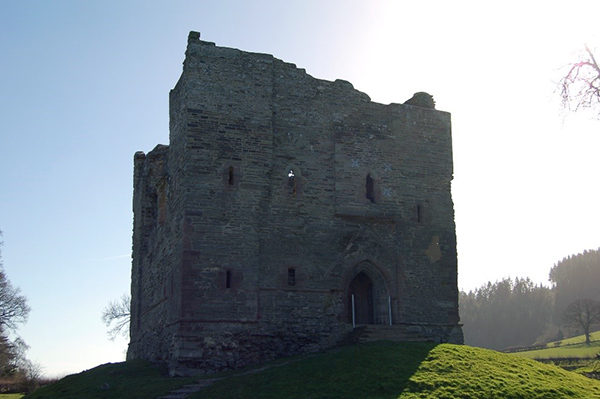
Hopton Castle, Shropshire, scene of an infamous massacre in early 1644
Pike and Shot armies, especially those of the Civil War have been owned by most wargamers at one time or another. Often described as ‘evergreen’, it’s one of those periods that catches the imagination’ It’s easy to see why. Most parts of the British Isles can claim some connection with the events of the war, and a little research can pay handsome dividends. I live on the edges of the Welsh Marches. Within an hour, I can find siege earth works, ruins not rebuilt from the civil war, and two churches that still bear the scars of the conflict. One of the greatest attractions for the gamer is the variety of scale. Due to the scope of the fighting, it’s easy to depict everything from skirmishes to the battles such as Naseby and Edgehill.
My involvement with the ECW supplement project came about when I met Warlords John Stallard and Rick Priestly back in 2013. I had already published an army list for the King’s Oxford Army and was interested in developing more of my ideas on the subject. A few emails and a couple of chats over the phone with Pike and Shotte rules author Steven Morgan plans, and a plan soon started to emerge.
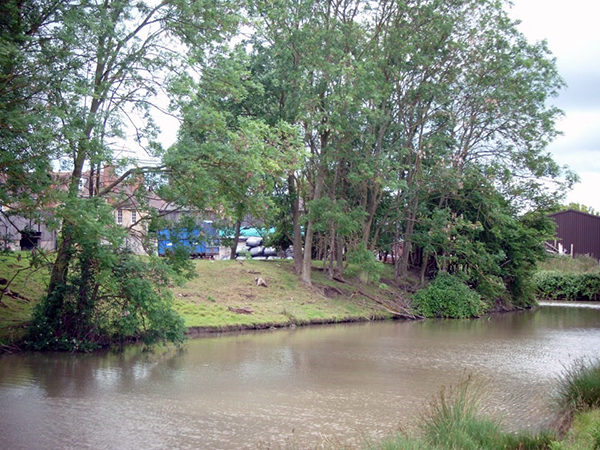
The earth works and a gun platform of Strencham House in Worcestershire
The Design brief
The biggest challenge for me was to do something different from what is already on offer to the wargamer. There are any number of rule sets and systems on the market all of which offer the gamer a wide variety of style of play mechanism. Most rules sets for me fail on the army lists and suggested organisations. They always want to cover the same few generic armies – ‘Royalist’, ‘Early Parliamentarian’, ‘New Model’, ‘Scots Covenanter’ and ‘Montrose’. I really wanted to challenge this and make this supplement something that was very different and new for the gamer.
Having created a frame work I next needed a team of players who would act as play testers and reviewers. The team members came from three sources, my wargames club- the Wyre Forest Gamers, the wargamers in my re-enactment regiment, Colonel Nicholas Devereux’s regiment, and the Little Contemptible Wargames Club, based up in North Shields. The gentlemen of the Little Contemptible Wargames Club not only play tested various scenarios and wrote battle reports, they also very generously allowed me to use and adapt their siege and combined unit’s rules.
The army lists
The army lists are for me the core of the supplement. Over the last 30 years there has been a great deal of research done on the composition and equipping of the armies of the Civil War. This work has led to a change in the ways we see the armies and how they were organised, equipped and used. We know they had far greater access to muskets thanks to imports from the continent than previously thought. The soldiers were also far more professional than a lot of early and Victorian painters and historians would have us believe. I wanted to use the lists as an opportunity to show the latest thinking and research, and I hope this comes across.

Evidence of the impact of a cannon ball at Tong Castle, Shropshire. Ruins of cottages never rebuilt can be seen nearby.
The result is 21 army lists many with variations based on year and location.
By deviating from the standard army list layout, I have attempted to give each army as many options and as much variation as possible. A typical example would be the Scots Covenanter Army list. The player is given the option to field one of three armies. Those fighting on the ‘home’ front against Montrose and the Scottish Royalists- this army consists of low grade infantry and small numbers of cavalry. ‘England’ – these represent the better equipped main armies fighting as far south as Hereford and in Ireland, and then we have the ‘Engager’ armies – these are the armies that fought in support of Charles IInd and can field lancers, Reivers and some pike divisions can be equipped with halberds.
The Montrose Scots Royalist list has a chronological approach to its construction. I have created two variations for the player to develop. A 1644 list has a good infantry component, whilst the 1645 list has a strong cavalry element. Both lists reflect the change in composition from when Montrose was reliant on a brigade of experienced Irish infantry to later in the campaign when he could attract local allies who brought with them well led cavalry.
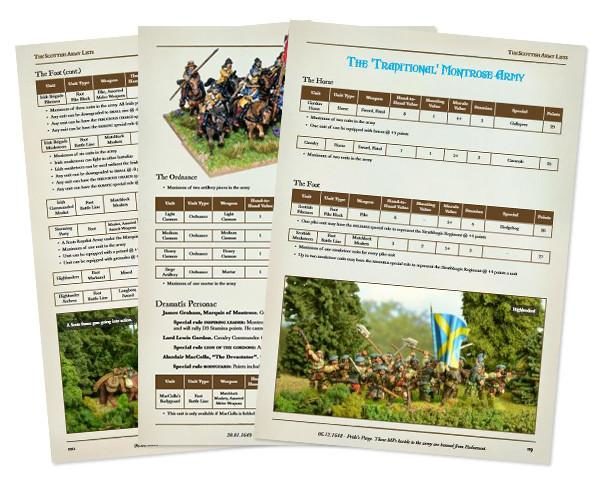 I’ve also intentionally downplayed the abilities of both the Highlander and Irish soldier fighting in Scotland to be more in line with modern thoughts on the fighting prowess of both. I know this will not be a popular move with many, so I also developed a third Montrose army list – the ‘traditional list’. This force sees the inclusion of all the ‘superhuman’ elements that some expect- mad highlanders with incredible powers and oodles of Gordon heavy cavalry.
I’ve also intentionally downplayed the abilities of both the Highlander and Irish soldier fighting in Scotland to be more in line with modern thoughts on the fighting prowess of both. I know this will not be a popular move with many, so I also developed a third Montrose army list – the ‘traditional list’. This force sees the inclusion of all the ‘superhuman’ elements that some expect- mad highlanders with incredible powers and oodles of Gordon heavy cavalry.
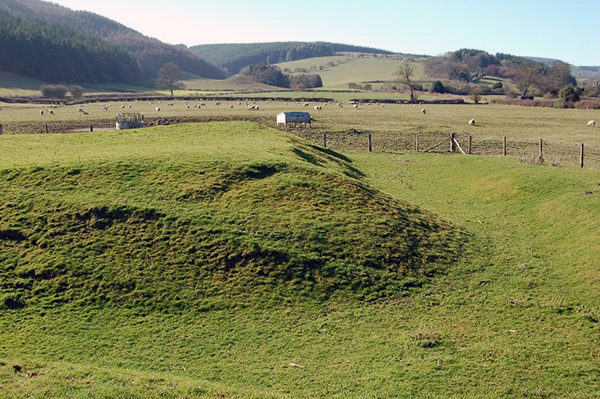
The remains of a Ravlin earth work and gun platform at Hopton Castle Shropshire
I’ve also made a move to include armies that maybe deserve a second look. Living near their operational area, I have long been interested in the Royalist forces that fought along the Welsh Marches. These forces had a kernel of experienced infantry that were shipped over from Ireland and were supported from elements of the King’s main Oxford Army. I’ve broken this list down into three potential armies. ‘Byron’, this is the initial army led by Lord Byron that came to grief at Nantwich, and features solid infantry and hardened cavalry. ‘Rupert’ – this is the army after Rupert took over command in the middle of 1644 to relieve the hard -pressed Earl of Newcastle trapped in York. Veteran infantry with independent musketeer units and a good amount of freshly raised levees from Lancashire, all form part of the ‘Yorke Marche’ as Rupert’s move north is called. The final army is called ‘Flying Column’ as represents one of Rupert’s highly mobile ‘battlegroups’. This army list features cavalry, independent and brigaded musketeers who can be mounted and galloper guns.
I’ve also revamped some old favourites too. The New Model get broken down into two sub lists, early with plenty of poor infantry and late with good cavalry and infantry and lots of seasoned veteran militia to support them. The Royalist main army, the King’s ‘Oxford Army’, gets a dedicated list too, also sub divided into early and late periods.
I’m sorry if your favourite army isn’t what you think it should be. Please feel free to challenge my ideas and alter them to suit your own tastes.
New period specific rules
The most obvious rule to add was one that combined pike and musket sub units into one formation. Playing the rules at my club, we used the ‘Pike Company’ rule on page 91 of the main book. We felt it gives a better period feel and it speeds up the game no end. I didn’t want to recycle the same rule again, so I looked around for inspiration. The Old Contemptibles Wargamers up in the North East came to the rescue and very kindly agreed to letting me use their ‘mixed formation’ special rule. I’ve also added a special rule that enables musketeers to be mounted for specific lists- both Rupert and Waller used or attempted to use horses to increase the mobility of their armies. Arguably not a battlefield formation, whatever you do, don’t let your mounted musketeers be caught by your opponent’s cavalry!
An easy and flexible Campaign system
I’ve always wanted to run a campaign based on local events. In my day job, I am a commissioning editor for a military history publisher. Last year we published ‘To Settle the Crown – Waging Civil War in Shropshire, 1642-1648’, which examines the Civil War in the county. I also do a lot of research on some of the personalities that fought in the region. This to me was too good an opportunity to miss. I then set about cobbling together a basic and uncomplicated turn based campaign system following discussions and chat with John Stallard. The system is robust and flexible enough to for the players to alter it to their own specifications and requirements.
So, what next?
It has been my intention all along to create an holistic experience for the Civil War gaming enthusiast. I hope to add scenario’s, new lists and rules suggestions over time and to get gamers playing the period and discussing it too. I’ve already had people talking to me about an idea of gaming tournaments with the rules and weekend long campaigns were teams of players compete against each other. The supplement isn’t gospel, but a platform for gamers to develop their own ideas and get more out of the period.
Thanks to all those that helped me on this journey and I hope to see you sometime on the field of battle.
Come grab your copy of To Kill a King here!
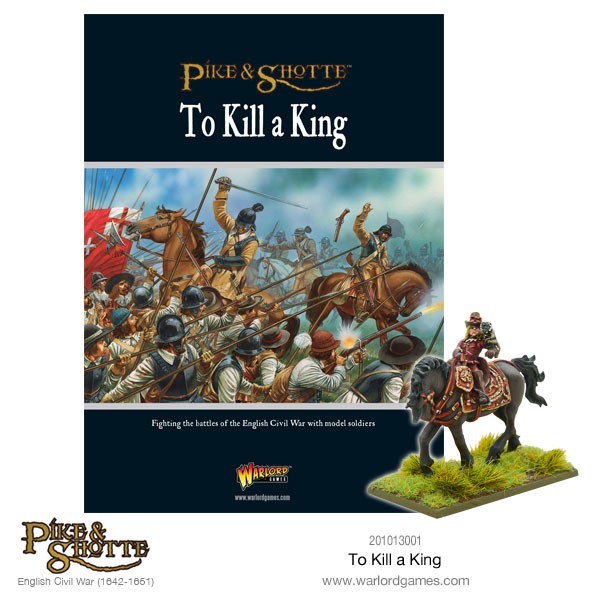
English Civil War Roundhead/Cavalier Starter!
A perfect start to civil wars, grab this set and you can make either Roundhead or Cavaliers!
